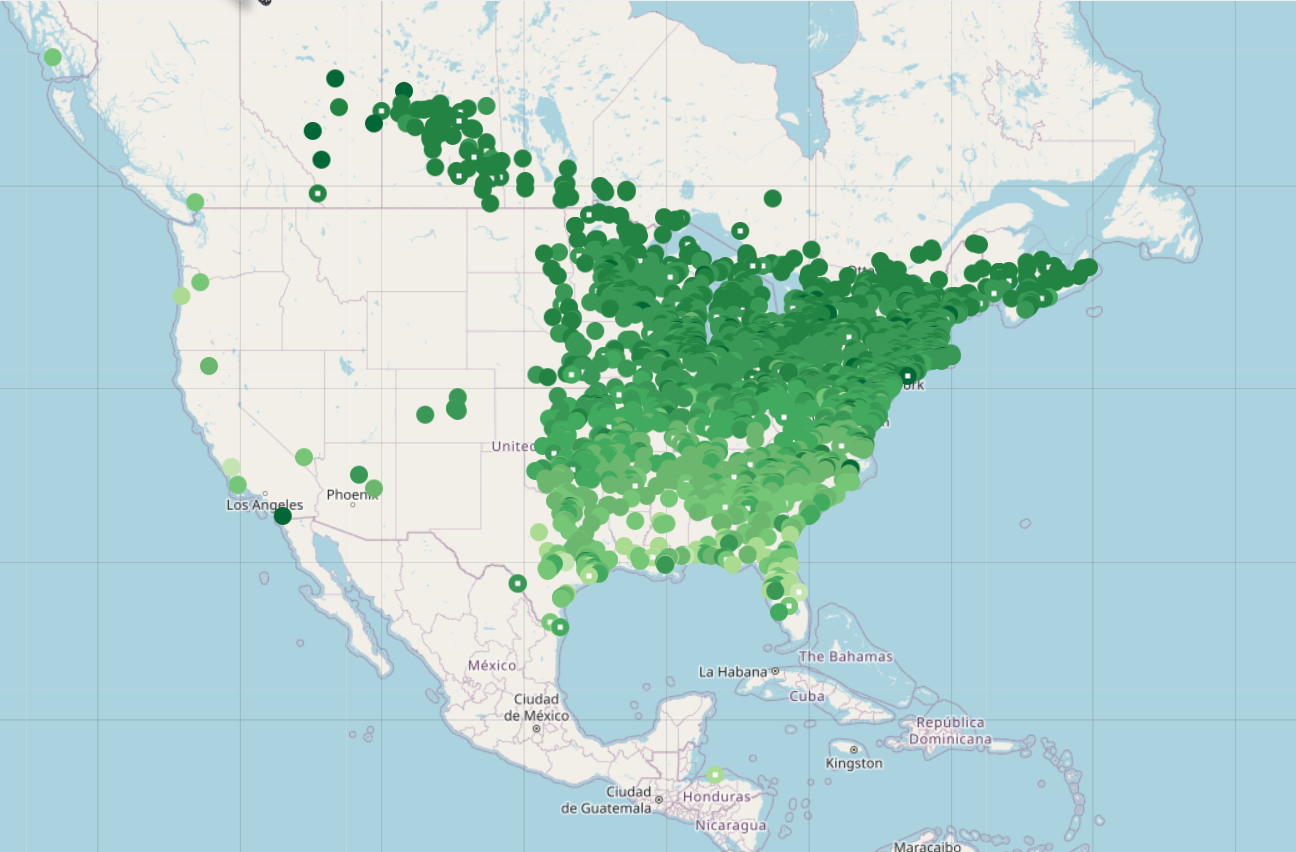Kansas’ Feathered Gems: an In-Depth Look at the Hummingbird Species
It is spring here in Kansas and as of April 25th, we have been seeing hummingbirds in our neck of the woods which means it's time to break out the feeders and enjoy the show. Through the following weeks, we should be seeing our avian friends fly back from the gulf coast, Panama, and even Mexico. They will return as small birds only to eat here in Kansas and get bigger all while fighting each other for resources along the way. Hummingbirds' abilities are quite amazing due to their well-engineered bodies, let's take a look at some of their niche adaptations, behaviors, and the journey they take.
A Hummingbirds Journey
A hummingbird's journey is a cycle. In the spring they travel from places like the Gulf Coast, Mexico, and even Panama to come to Kansas for warmer temperatures and less competition for food. Then when winter hits in Kansas it gets too cold causing them to migrate back to where they came from in search of, once again, warmer temps and more food resources.
We can track their travel plans but one of the best ways we know they have begun to travel back to Kansas for the season is when we witness them ourselves on flowers and feeders in our yards along with the personal accounts of others in the area. One of the ways people communicate this to others is with tools like Journey North from the University of Wisconsin - Madison. This site tracks phenology with civilian science sourcing data from all over. Basically, when people see a hummingbird they go to their site to log it so everyone's data can be seen all together. This allows us to get an idea of what certain stages of their journey they are in or how many there are in our area.
The cycle begins as it hits early spring some of the hummingbirds have started to make their journey from the Gulf Coast, Mexico, and even Panama back north towards us all in Kansas. While they can make the 500-mile trip across the Gulf of Mexico in one day the male hummingbirds tend to travel back earlier in the spring than the females. In Kansas, one of the most common birds we see is the Ruby-throated hummingbird, mostly on the eastern side of Kansas.
Ruby Throated Hummingbird
Ruby Throated hummingbirds or Archilocus colubris in Latin are one of the most common hummingbirds in the east side of Kansas and can be found from Canada to the gulf coast. Even though we might see Ruby Throated hummingbirds as quite rare here in Kansas they are 1 of over 300 + species of hummingbirds that fall into the Trochilidae family.
What Do They Look Like?
It may be hard to see the hummingbird as it is fast and agile but this is exactly what their body is built to do. But even as fast as they go we need to know what they look like to be able to identify them.
Right off the bat you may notice by looking at them that the males have a large iridescent red patch of feathers on their throat accompanied by a black mask while the female's throat is completely gray and she has no special face coloration. But as for the emerald green back and crown the male and female share these features.
Make it stand out
What do they eat in order to maintain this level of body function


Female hummingbird drinking from feeder




